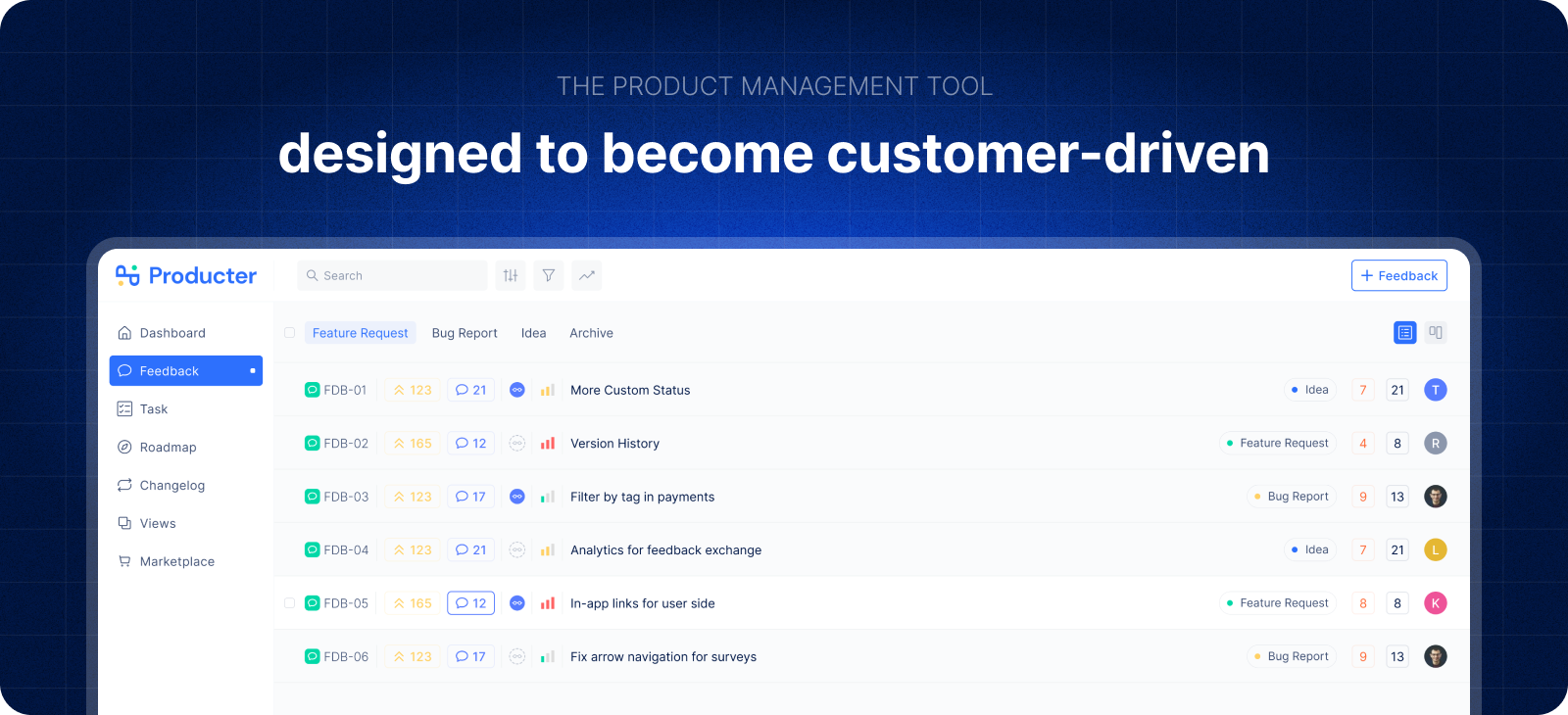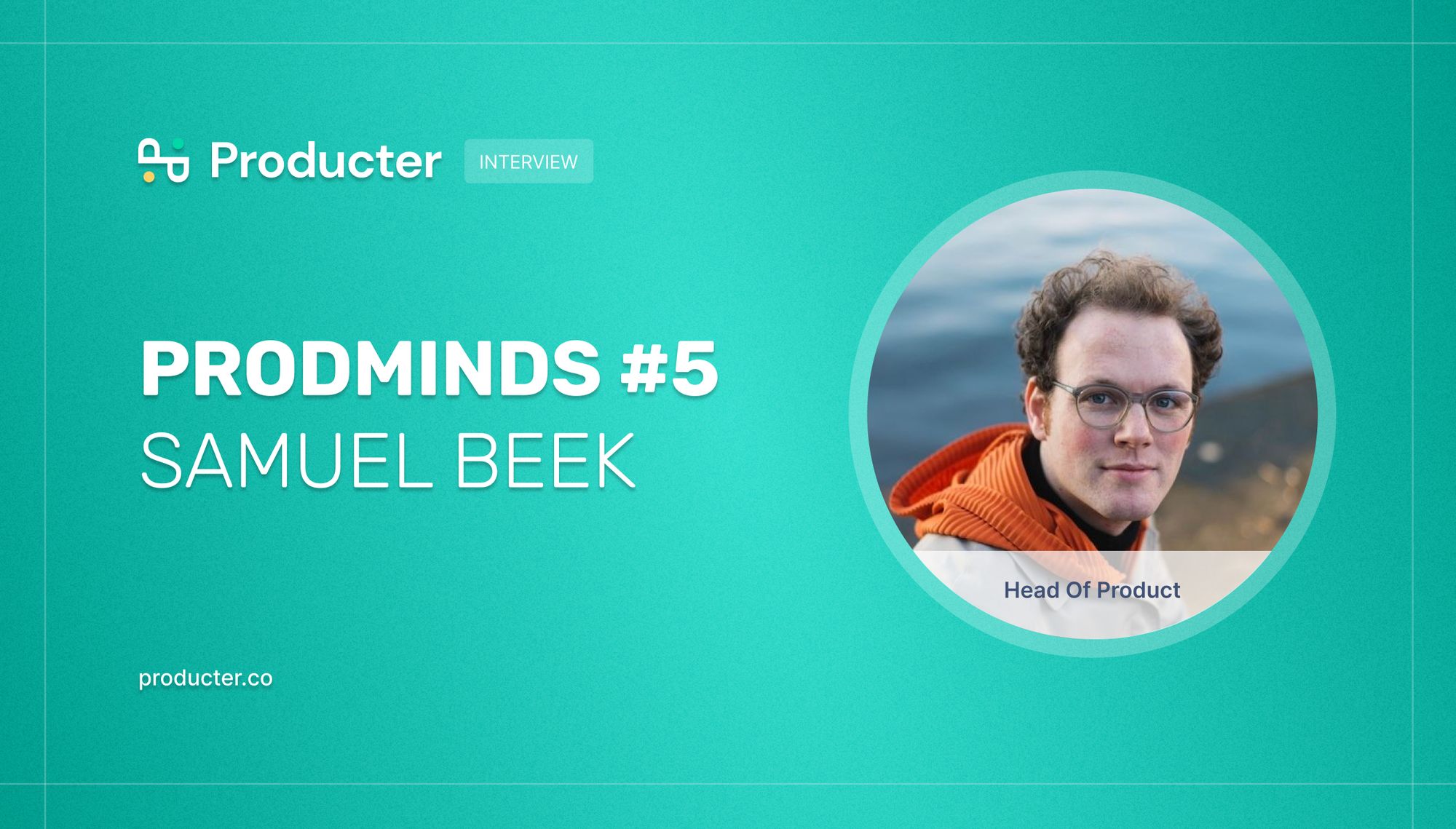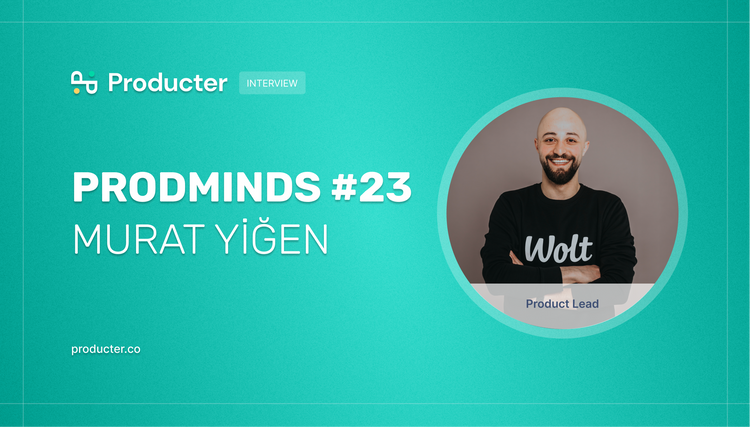ProdMinds is an interview series featuring product minds around the world.
Team Producter: Would you tell us a bit about you and your career path in product management?
Federico: I think no one is born a Product Manager, simply because there is no single study course to become one. And I was no exception. I studied computer and data science at the Polytechnic University of Milan and the Technische Universität Berlin, therefore my background is focused on big data, machine learning, AI, computer vision, NLP and similar catchy buzzwords that came out in the last decade and subsequently became quite popular outside the tech world as well. As opposed to many other data scientists or ML engineers whose goal is to solve specific business problems in defined contexts, my secret ambition has always been about applying my knowledge to create products able to scale to thousands or millions of users. Not only that, but I also wanted new products to be applicable in different business contexts and satisfy the needs of a wide range of stakeholders. I landed my first job as a data scientist at ContentWise, a UX & personalization enhancer company for video broadcasters. Initially, I was in charge of spotting similar compelling needs in retail and fashion markets, framing a suite of products and services to tackle them and combining the company’s expertise with innovative AI-driven technologies. A new market, new ideas and new products, blended with a decade-long company expertise. Basically, that was the perfect playground for a product-oriented geek like me. The shift from data science to product management happened smoothly along with the progress from problems sizing and solutions design to solutions abstractions and products scaling.
Team Producter: Which part of being a Product Owner is the most challenging for you?
Federico: I’d have to say the most challenging part is communication. Communicating is hard. You have to tailor your content to internal and external stakeholders and it is highly unlikely that the same speech, docs, attitude and storytelling could be used with all of them. Every product team interacts with many different people who have different backgrounds, goals, contextual information and requirements. Internal stakeholders themselves are divided into tech/dev teams, managers and c-levels, marketing, sales, business development, operation and support. Each team sees the product from a different angle. The end result is that even when the message is clear and consistent you still have to frame it differently for each of those groups, if you want them to grasp what you are actually communicating. With external stakeholders, things get even more complicated, especially in the B2B and B2B2C market where you have different groups of users, buyers, decision makers, final customers and the messages you convey must convince all of them, even if they have some overlapping or contrasting interests! On top of that, consider that products are like living beings, especially new products in new markets. They change continuously: new requirements are being defined while you’re interviewing new customers while the company may even shift goals because of market competition. Think about Instagram for example: it was born as an airport check-in app! In the end, communication is a continuous process since the message keeps changing and you have to update and reframe it for different target audiences.
Team Producter: How do you think departmental silos affect product companies? In what ways do you build and maintain relationships with stakeholders from different teams?
Federico: Departmental silos make communication efforts even more difficult. If business units and teams specialize, it’s inevitable that they will grow apart and each one will set different team goals and work in different directions; all of this will in turn affect overall productivity. Keeping all teams aligned is a continuous effort, but it is fundamental for a product manager. The whole company revolves around the products they sell, therefore it’s the product manager’s duty to keep all the different silos aligned. Acommon mistake is thinking that producing tons and tons of documents that get disseminated around different departments is the solution. Don’t get me wrong; I’m not saying that tracking decisions through docs is not useful. However, it is only a part of the solution, but it is not enough to solve the problem, especially if not handled properly. First of all, people don’t have the will nor time to read docs continuously. Secondly, you can’t just “produce” documents; you also have to update them to avoid contradictions and on top of that you have to frame them according to your audience. Overall, even if necessary, documenting is time consuming and there is no guarantee about its effectiveness. This approach can be supplemented by frequent, informal, direct communication that exposes your way of thinking. What I mean by that sort of communication are videos, informal meetings, open discussions in common areas, casual conversations with colleagues about the products and so on. This will make the other stakeholders understand how you think, so they will be urged to put themselves in your shoes and understand why it is that you made the decisions you made. If they understand the logical process behind a decision, it will be easier for them to remember it, accept it, implement it or even argue against it — but right on the point. Of course, this method works better in smaller working groups and it is the solution to all the problems related to departmental silos, but it can help tear down some of the barriers that sometimes arise between different teams.
Team Producter: When it comes to listening to your users, what’s your method? Is their input considered in critical product decisions?
Federico: We constantly collect feedback from our users, especially about the usability of our products. Whenever possible, we set up dedicated UX interviews with our UX Designer who analyzes how our users interact with our products. Through interviews, surveys and direct observation of our users we collect the most feedback on what to add, improve, change or remove from our products. The biggest challenge is understanding what the users really want. If you ask them directly, be prepared to receive biased answers based on the type of interaction they have had not only with your product, but also with other products they had previously used. Their answers are generally also influenced by their habits and processes. A famous saying in the product management field goes: “if a person who just bought a painting is asked what they need now, they will reply they need a drill or hammer and nails, but what they really need is any way of sticking the painting to the wall”. The same thing happens when asking users what they want. Even before they start answering, they have already filtered out possible solutions, their real pains and needs and come to you proposing a possible solution, without even describing what is the problem they want to solve. That’s where the role of Product Owners comes in: retrieve feedback from multiple sources without influencing them with your own ideas and biases. Then comes the difficult part: process the feedback in order to take out the most sensible requirements for future improvements. This is the phase when a product manager has to put in creativity and lateral thinking, thereby challenging previously established ideas in order to merge industry knowledge with trends prediction so that the product could evolve and appease even more users.
Team Producter: The best way to guard against your biases is to make data-driven product decisions. What’s your approach here?
Federico: As mentioned before, multiple groups of stakeholders interact with a product. Product Managers/Owners are only a part of them, but they are the one in charge of making decisions that might be favorable to all the other groups. And every decision may negatively affect some of the stakeholders. Being able to relate to objective data makes the difference, both in terms of decision making and proving your point against objections. In order to apply a data-driven approach to your decisions, the first step to take is data collection. You need to plan ahead all your strategies and break them down into smaller steps such that their outcomes can be measured. The smaller the step/change, the easier the attribution of the change in measurement to that specific change. In this way, the next decisions to make will rely on stronger bases, given from the data collected after the measurement of the previous outcomes. This will lead to small, agile, incremental decision making and fast revert/roll-forward. This philosophy aligns well with the popular OKR framework invented by Intel and made popular by Google. Keeping the product-related decision timely aligned with the business goals helps revise past decisions, identify issues and spot new opportunities in an agile manner.
Team Producter: What is the greatest benefit of having a technical background as a product manager?
Federico: The biggest advantage that comes from a technical background is the possibility to interact directly with the development team. It is of vital importance that a product manager be able to explain the requirements, features and roadmap to the development team as well. They should not just receive a feature specification document and implement the code required to make it work. This will lead to a lot of misunderstanding and low engagement from the development team. They should actively take part in the design process from the very beginning in order to anticipate the shortcomings that other stakeholders — UX designers, industry experts, business managers — don’t see. Since development teams often speak a complex, highly specific and technical language, being able to grasp their points represents a key advantage in the decision making process. Missing their feedback — or being unable to understand it properly — may lead to cumbersome design and pose a roadblock in the evolution of the product.
Producter is a product management tool designed to become customer-driven.
It helps you create collect feedback, manage tasks, sharing product updates, creating product docs, and tracking roadmap.

You may also like:








